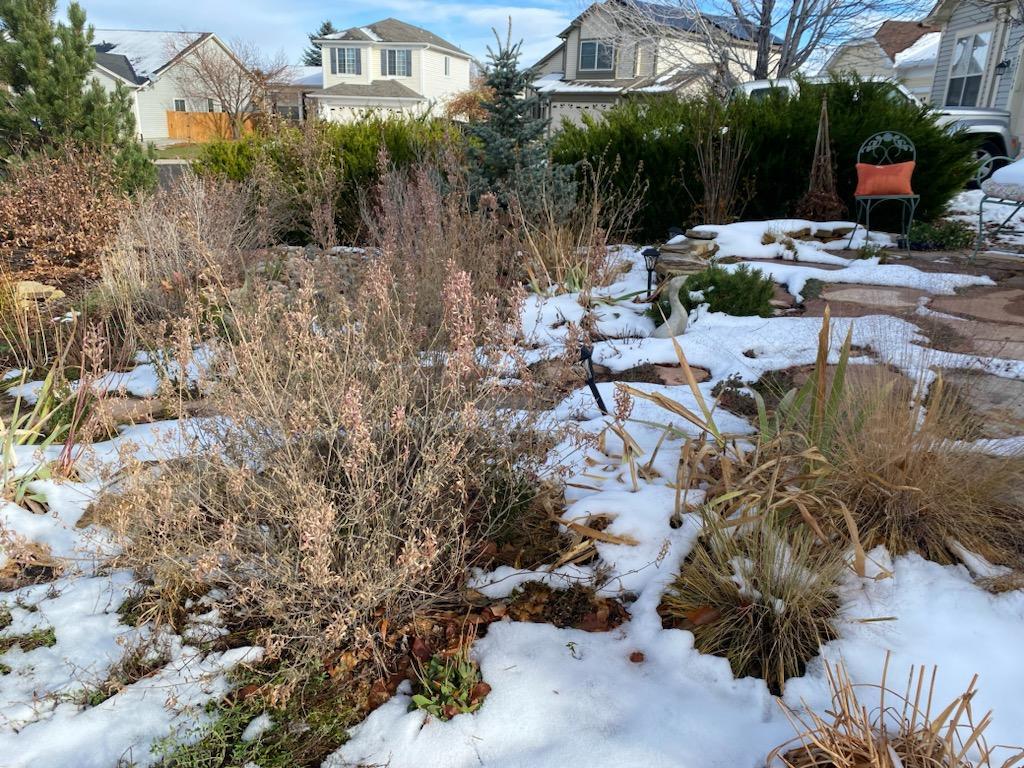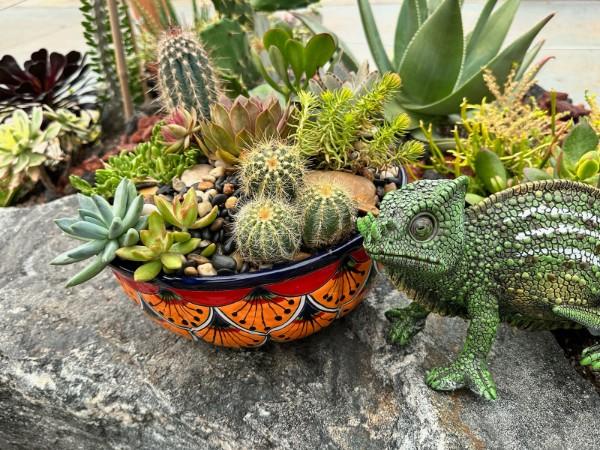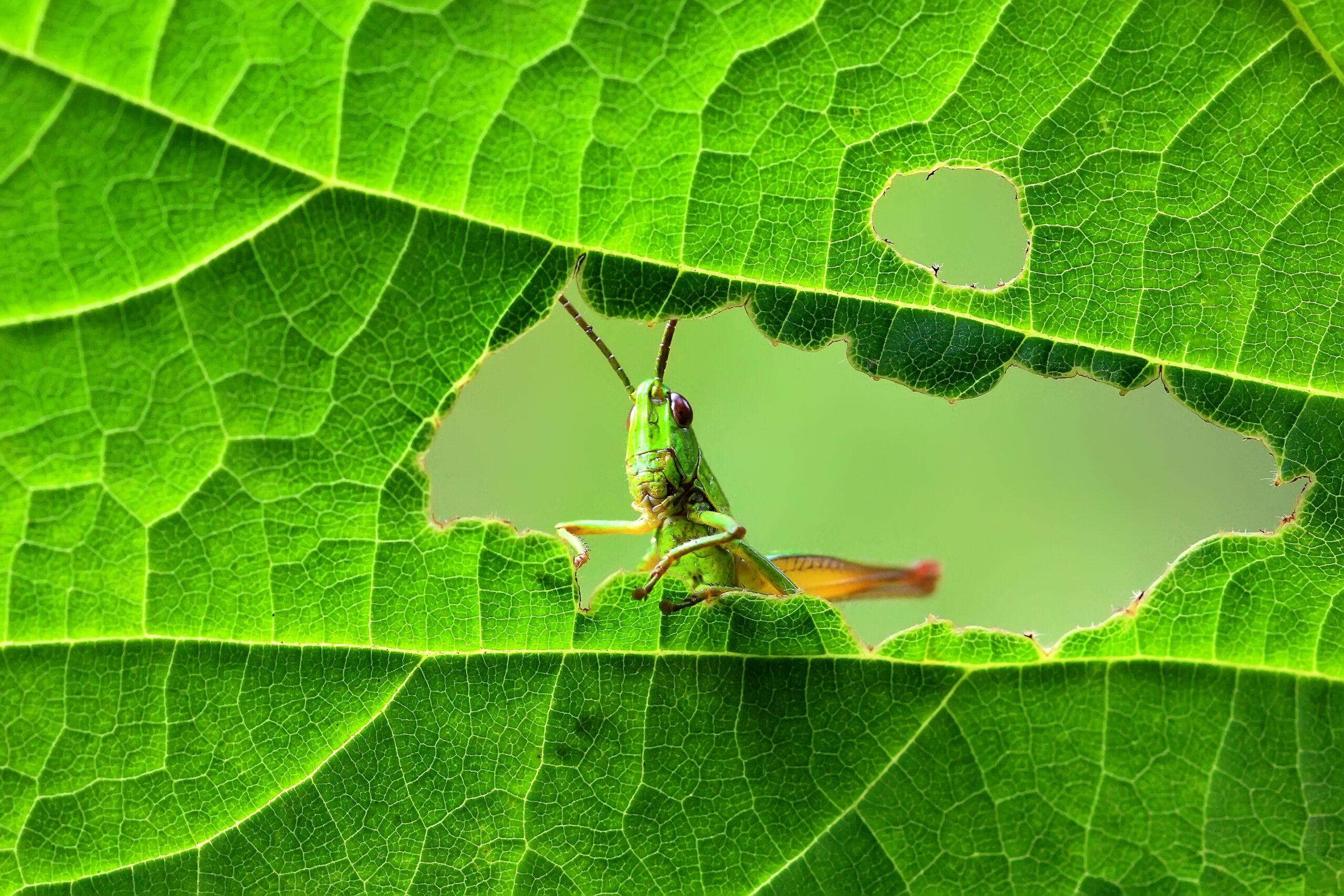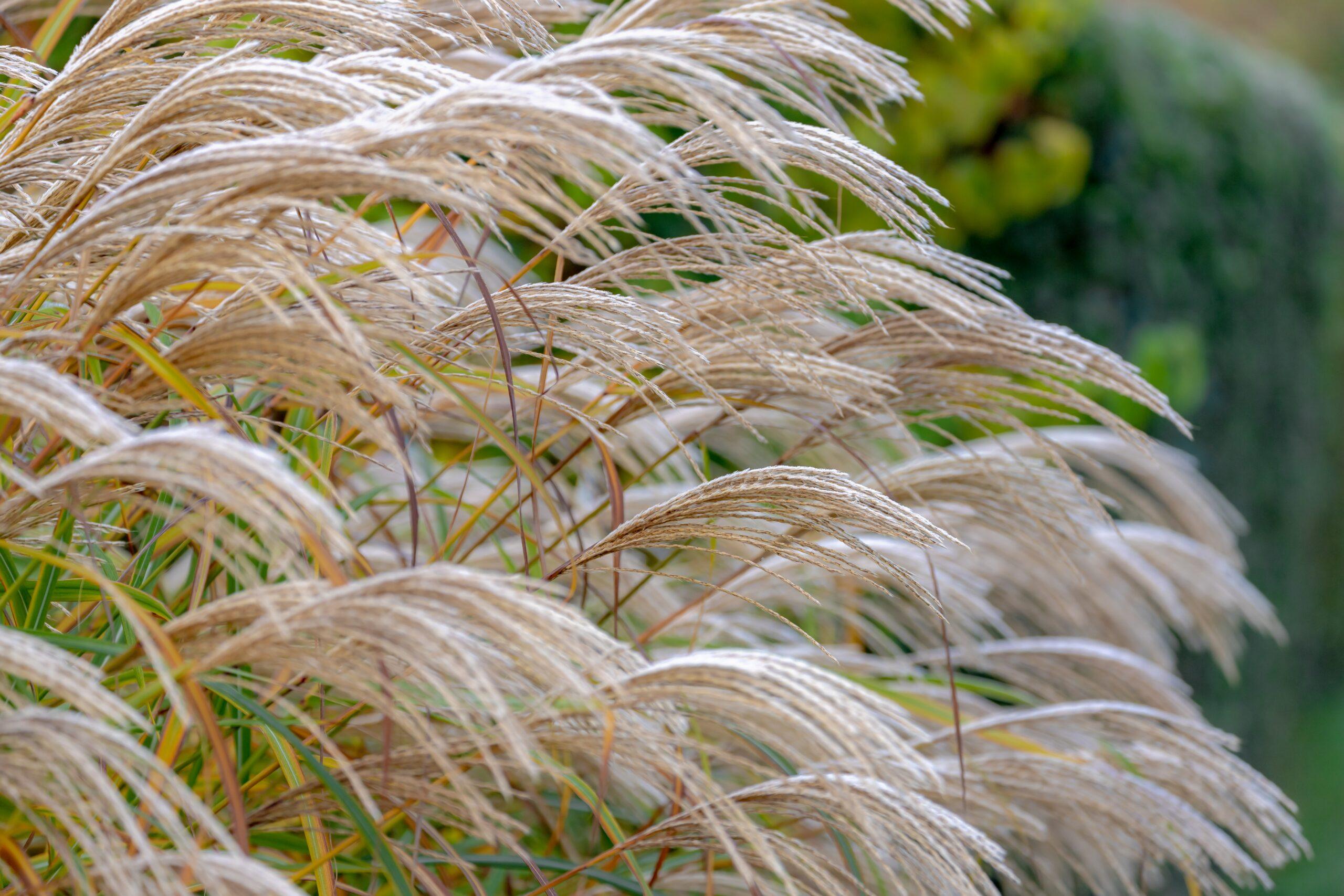I love Indian summer! Now that we’ve had our first big taste of winter along the Front Range, the forecast is for several days of warm, dry weather ahead. As the snow melts, it’s a great time to go for walks… play in the park… and give our gardens some very simple TLC that will pay off down the road in the form of watering!
Some Indian Summer do’s and don’ts
In most places outside the mountains, our Indian summer temperatures have melted most of the snow from last weekend’s storm. But for the sake of discussion, guess how much moisture that storm left behind. Take my backyard east of Parker, for example. We got about 12″ of the white stuff…not heavy wet springtime snow, but not dry powder either.
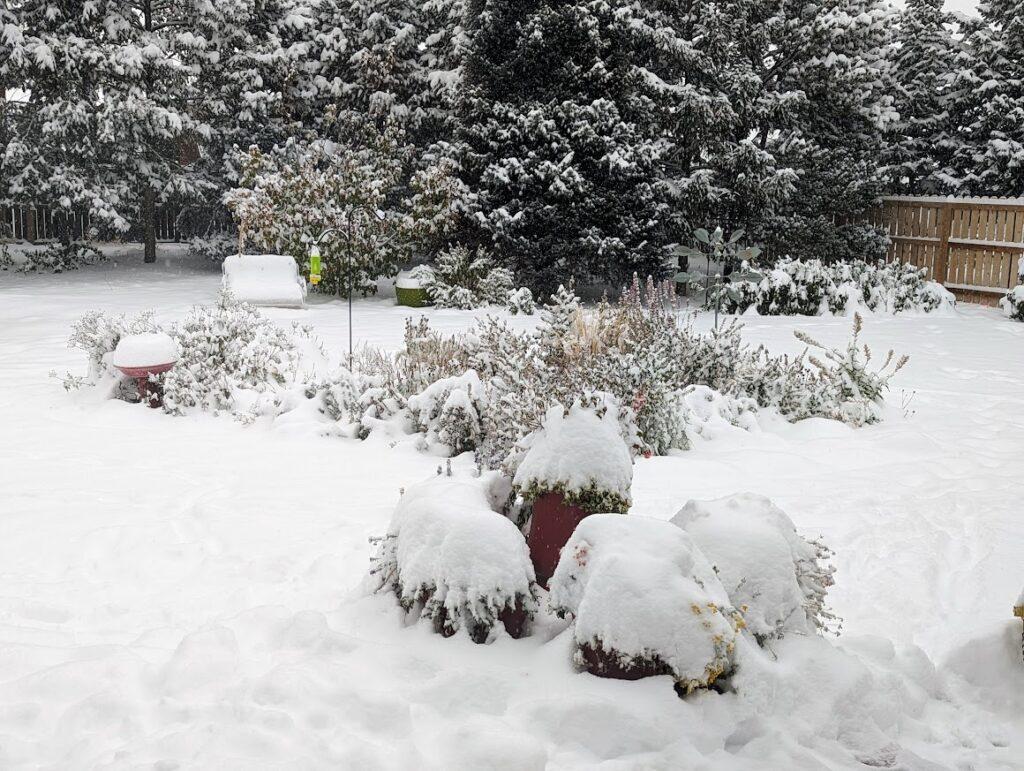
Would it surprise you to know that the foot of snow in my yard amounted to about an inch of water? That moisture is undoubtedly helpful, but I doubt if it’s enough to sink into the soil and fully hydrate my perennials and shrubs, much less my trees! Many Front Range I-25 corridor areas outside of the mountains got far less than a foot. Gardens that received six or seven inches of snow may have only half an inch of water to show for it. Again, not enough to give the landscape all the water it needs going into winter.
Do plants need a big drink this late in the season?
Absolutely! The better-hydrated perennials, trees, and shrubs are going into winter, the more likely they are to stand up to sub-freezing temperatures and prolonged dry spells. It just makes sense! These plants are dormant, in something of a deep sleep, but they’re not shut down completely.
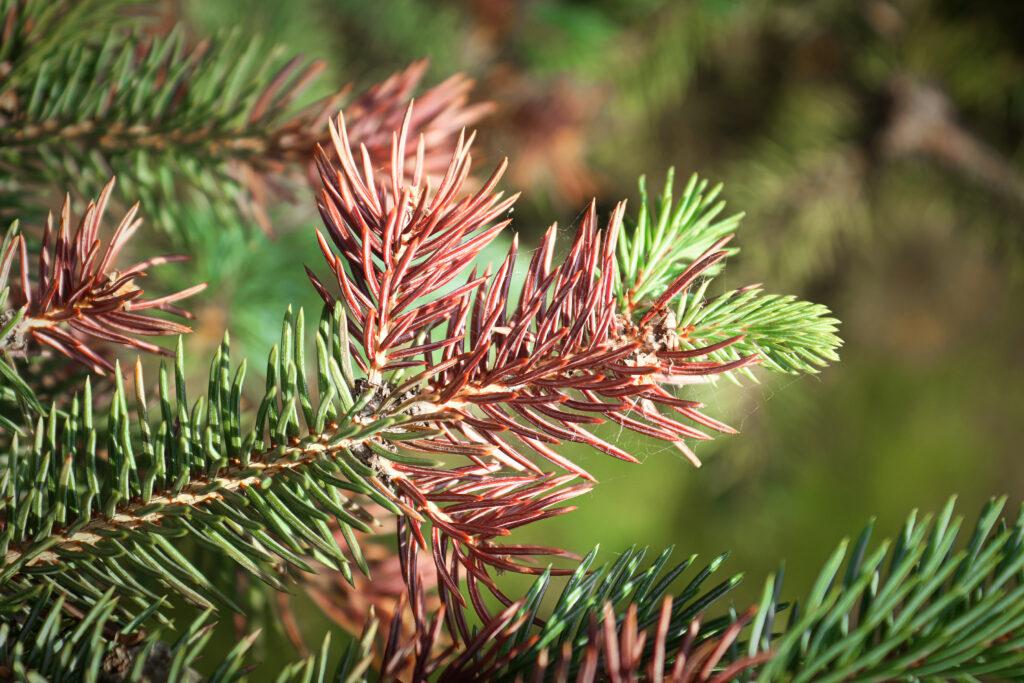
Adequate moisture for plants outside of their regular growing season can help protect them from winter desiccation as seen above. The fibrous roots that help carry water to the larger root system and then into the tree are small and fragile. They dry out very easily and can fail if they go without enough water for too long. Part or all of a plant can die as a result.
Any plants new to the landscape, those put into the ground in the past year or two, are still working to build robust root systems. For them, plenty of water… enough to soak down to the bottom of their root zone… can make all the difference for their long-term survival.
It’s drag-a-hose, haul-a-bucket time if you value your plants!
I’m not at all suggesting you turn your sprinkler systems back on, which ideally should have been blown out by now. But I can’t emphasize enough how a deep watering during these Indian Summer days can benefit your gardens long term.
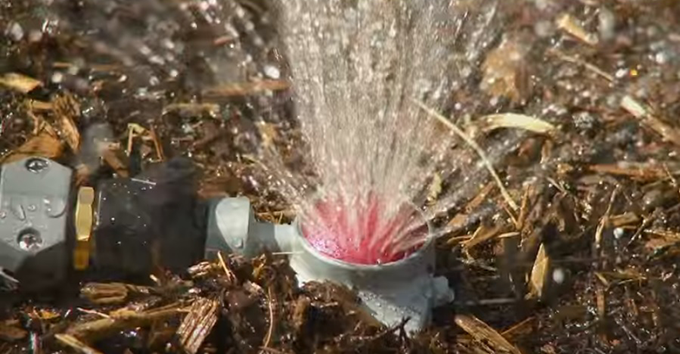
On warm days such as those coming up, and also throughout the winter, drag a hose or haul a few buckets of water out to your most vulnerable perennials, shrubs, and trees. For newer plants, those in the ground for just one or two growing seasons, put the water over the root ball as it existed at the time you bought the plant. For slightly older plants, the water can go a bit farther away from the base of the plant. For more mature trees, try to water deeply under the canopy, or the “footprint” of the branches.”
Remember on average, outside of the mountains, a foot of snow delivers about an inch of water. When Mother Nature hasn’t provided enough moisture to sink to the bottom of your plant’s root zones, it’s up to you to step in. Water late morning to mid-day once a month if we haven’t had a truly soaking snow. Test the soil first by using a screwdriver to make sure the ground isn’t frozen and can absorb the water. Be sure to stop watering in time to let the water soak in and not create a layer of ice sitting over the roots once the sun sets.
One more thing to consider for the mild days coming up…
It is not advisable to prune perennials. In many, if not most cases, try to leave your perennial foliage in place if it’s still upright. The faded plants may offer “winter interest,” something pleasant to look at, dusted with a bit of snow, as an alternative to a bare garden bed. Those browning stems and branches hold food energy that the plant can use as it heads into dormancy.
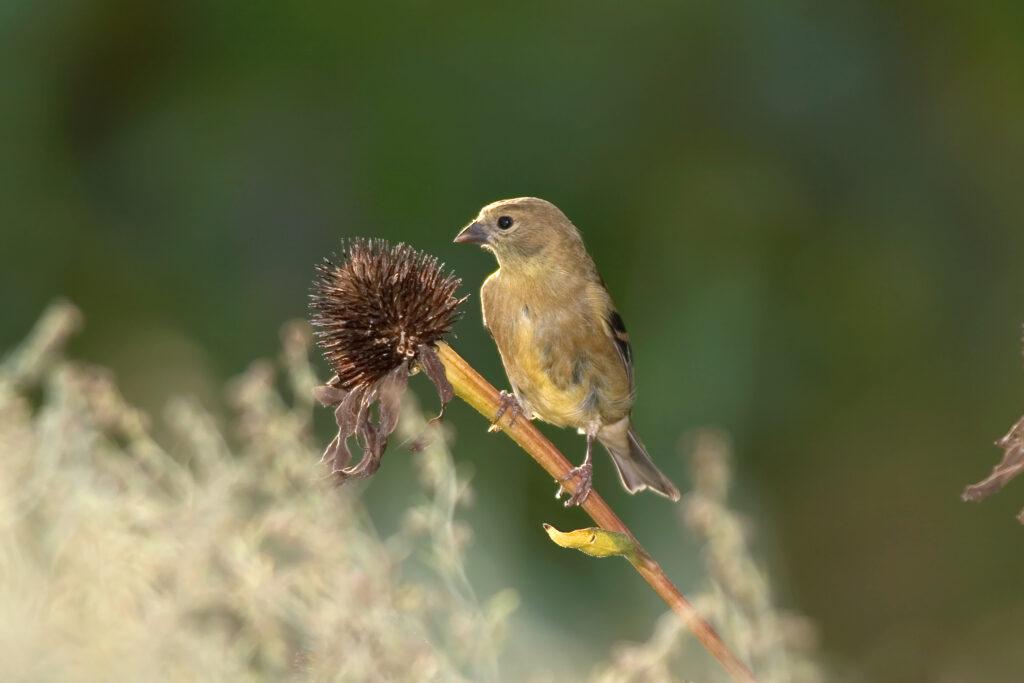
Dried seed heads from the plants frequently offer food for the birds. While the snow was still falling over the weekend, I was amazed to see dozens of birds happily feeding on perennials in my beds, including coneflower seed heads.
Leaving dried foliage and stems in place can also offer a habitat for beneficial insects overwintering in your garden.
There are exceptions to this pruning guideline
If the snow completely smashes a plant, especially tall and wispy plants like ornamental grasses, cutting those plants back may be in order.
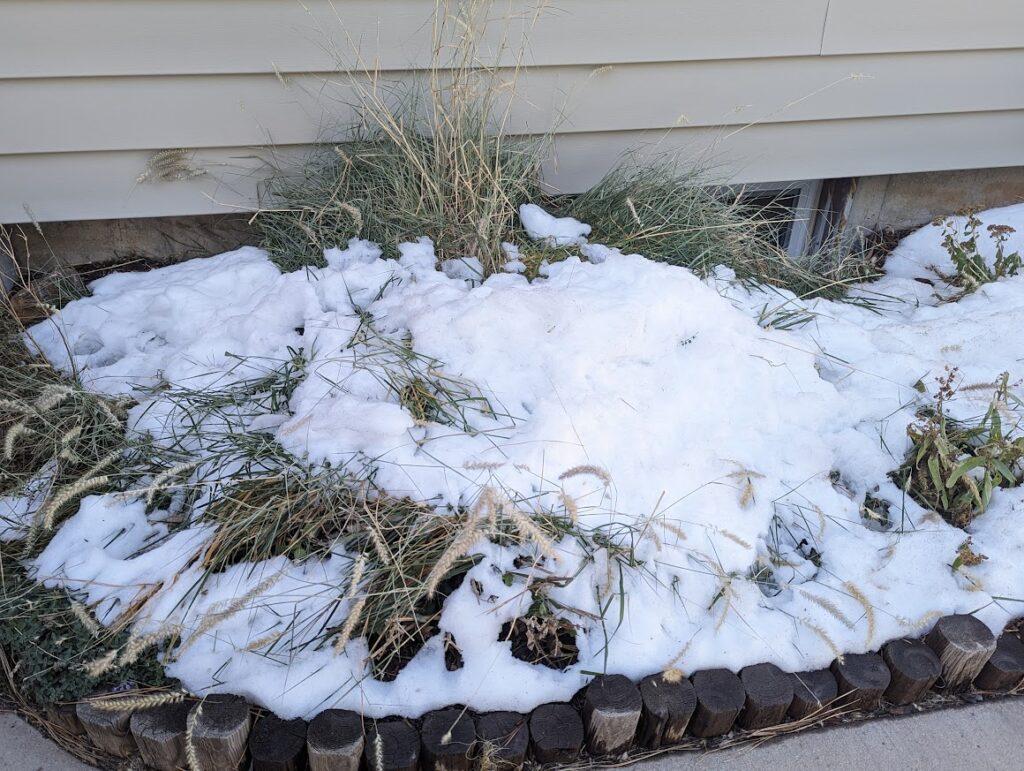
Don’t cut them back to the ground! Grasses especially should be left with at least eight inches or so of stubble to help insulate the crown of the plant and capture snow for additional moisture. Cut down farther in the spring once the plant shows the first tiny green shoots emerging.
Gardening doesn’t stop for the winter
Caring for our gardens certainly slows way down with the first freeze and snowfall, but it really shouldn’t stop altogether. During the next weeks and months, TLC for our gardens should include wrapping young and thin-barked trees to protect them from sunscald damage (as seen in the bucket watering photo above). It’s also time to set rose collars to protect grafted roses. All winter long, be on the lookout for split or broken branches and limbs that need to be removed.
If you have any questions about how or when or why to keep showing our gardens love during the winter season, please come visit Tagawa’s Garden Advisors at Dick’s Corner. They are happy to share that love, and are ready to help!
